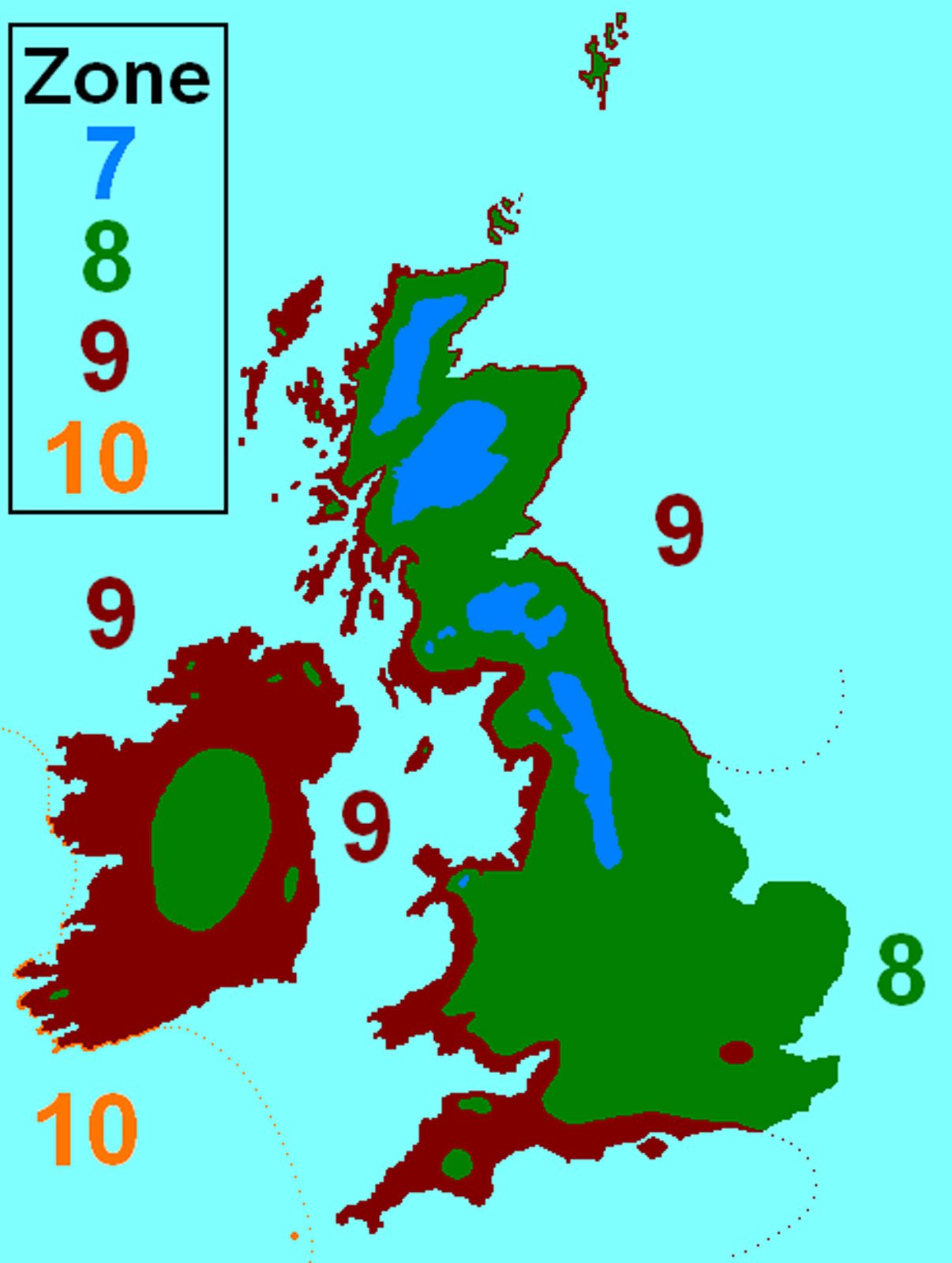Hardiness Zones In Britain – USDA And RHS Hardiness Zones


If you’re a gardener in the United Kingdom, how do you interpret gardening information that relies on USDA plant hardiness zones? How do you compare UK hardiness zones with USDA zones? What about RHS zones and hardiness zones in Britain? Sorting it out can be a challenge but understanding zone information is important because it helps you select plants that have the best chance of surviving in your particular climate. The following information should help.
USDA Plant Hardiness Zones
USDA (U.S. Department of Agriculture) plant hardiness zones, based on minimum ten year average temperatures, were created in the 1960's and are used by gardeners around the globe.
The purpose of the designation is to identify how well plants tolerate the coldest temperatures in each zone. USDA zones begin at zone 1 for plants that tolerate severe, subfreezing temperatures to tropical plants that thrive in zone 13.
RHS Zones: USDA Zones in Great Britain
RHS (Royal Horticultural Society) hardiness zones begin at H7 (temperatures similar to USDA zone 5) and are used to designate very hardy plants that tolerate subfreezing temperatures. On the opposite end of the temperature spectrum is zone H1a (similar to USDA zone 13), which includes tropical plants that must be grown indoors or in a heated greenhouse year-round.
Does Britain Use USDA Hardiness Zones?
While it’s important to understand RHS hardiness zones, much of the available information relies on USDA zone guidelines. To get the most benefit from the wealth of information on the Internet, it’s a tremendous help to arm yourself with information about USDA zones in Great Britain. Most of the United Kingdom is located in USDA zone 9, although climates as chilly as zone 8 or as mild as zone 10 aren’t uncommon.
As a general rule, the UK is marked primarily by cool (but not frigid) winters and warm (but not scorching) summers. The UK enjoys a fairly long frost-free season that extends from early spring to late autumn. Keep in mind that UK zones and USDA zones are intended to serve as guidelines only. Local factors and microclimates should always be taken into consideration.
Gardening tips, videos, info and more delivered right to your inbox!
Sign up for the Gardening Know How newsletter today and receive a free copy of our e-book "How to Grow Delicious Tomatoes".

A Credentialed Garden Writer, Mary H. Dyer was with Gardening Know How in the very beginning, publishing articles as early as 2007.
-
 Looking For Plants To Give You The Soft And Fuzzies? Try These 5 Fuzzy Leaf Plant Options
Looking For Plants To Give You The Soft And Fuzzies? Try These 5 Fuzzy Leaf Plant OptionsLovers of texture, drama, silver foliage and tactile plants will adore these special sensory garden additions. These fuzzy leaf plant options will leave you all aglow
By Susan Albert
-
 Get Ready For A Summer Of Hummers! Grow These Full Sun Hummingbird Plants and Flowers
Get Ready For A Summer Of Hummers! Grow These Full Sun Hummingbird Plants and FlowersIf you’re lucky enough to enjoy a sunny backyard, make sure you are maxing out on your pollinator opportunities and grow these full sun hummingbird plants and flowers
By Tonya Barnett